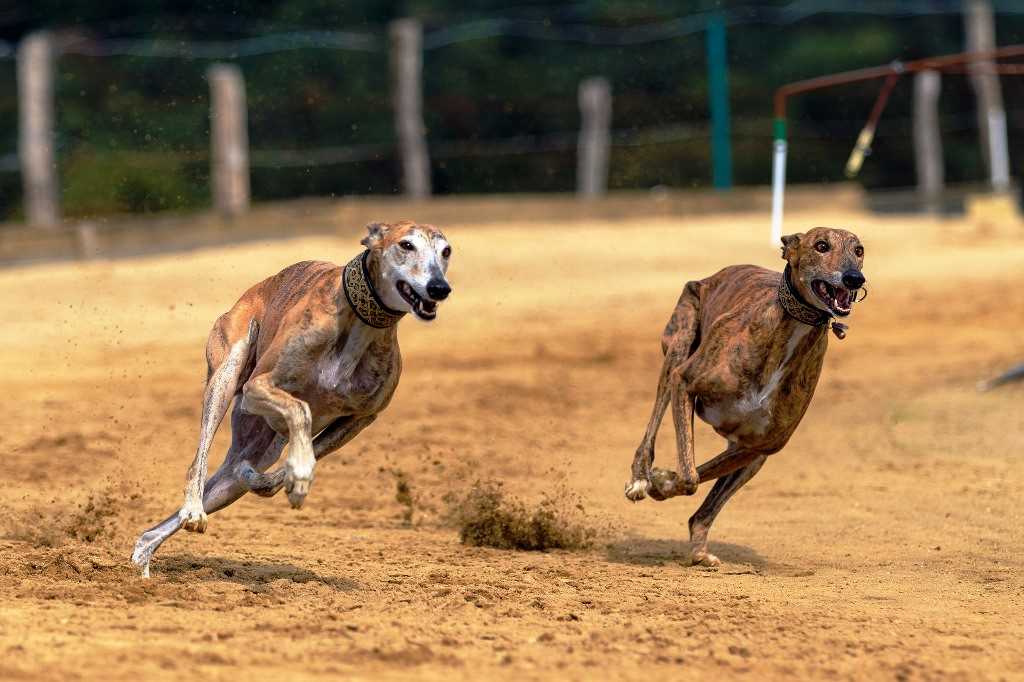The grand griffon vendeen dog breed originates from France and more precisely from the county of Vendée. It is a very rare dog and very few examples can be found except in its land of origin. It is a hunting dog and many French people call it the best hound in an absolute sense. It is a dog that usually hunts in moults and nowadays, as the large moults have disappeared, the grand griffon vendeen has become a show dog.
Its ancestors are not certain and very little is known about its origins. Some hard-haired and some smooth-haired breeds have been attributed to him as his ancestors. However, the most probable ancestors are the king’s white dog, in the hard-coated variety, the Italian Bracco and the fawn dog of Brittany, which would have contributed to its characteristic coat; the grey dog of Saint-Lous and the griffon vultures of Bresse. During the Second World War, this breed risked extinction.
Character of the grand griffon vendeen dog breed
The grand griffon vendeen is an intelligent, fast dog, always full of energy, determined and courageous. In hunting dangerous wild animals, it has distinguished itself by its tenacity and courage, especially towards wild boar, but it was once a worthy enemy of wolves. With his master and in the family he is very close and affectionate, especially with children. It has also proved to be a valuable defence dog for the home and the person, but also a good friend in life.
It is not strictly a companion dog as it has a great need for outdoor living and lots of physical activity. However, as he is very attached to his owner and family, he likes to live in contact with them and is also adapted to living in a flat, provided it is large and perhaps has a terrace, as long as he is given the exercise he needs. With strangers he is a little wary and aloof, so he is very suitable as a guard dog. However, his ideal place is a house with a secure garden where he can spend most of the day.
With its owner it is docile and is affectionate with people it considers friends. But the owner must not be a novice with the training of this dog as it is rather stubborn, and is difficult to handle, especially in the home, if it does not receive adequate training. It is therefore essential to start already as a puppy, using its intelligence to the maximum, in order to memorise and execute commands to perfection. Its education must be done with constancy, using logic rather than strong manners.
Appearance of the grand griffon vendeen dog breed
The grand griffon vendeen is a medium-sized dog, with a height at withers of 60 to 65 centimetres and a weight of 30 to 35 kilograms. It has a robust but well-proportioned physique, without being heavy; its structure is harmonious and elegant and it is graceful in its movements, even when running and lunging at its prey. The body is solid and is more developed in height than in length.
Its legs are long and have a rounded bone structure and are strengthened by developed but not overdeveloped muscles. Its feet have arched toes and hard pads, a characteristic that allows it to move calmly over all types of terrain, even very impervious ones. The tail is attached high and broad at the root, thinner at the tip, and is carried raised sabre-like.
The head is elongated and the skull is narrow between the ears. The muzzle is elongated, straight and firm, ending in a large and very open black truffle. The eyes are large, dark in colour and with a lively, bright expression. The ears are attached low below the eye line, are narrow and long, rolled inwards and low along the head.
The coat is of medium length, generally very coarse and bushy, with a very dense undercoat, while it is shorter on the belly and inner thighs; the eyebrows are well pronounced and thick, but do not cover the eyes. The colours range from black with white patches, black spotted with fawn, black with sand spots, fawn with white patches, tricolour according to the above-mentioned shades.
Health and care of the grand griffon vendeen dog breed
The grand griffon vendeen is a dog with a healthy and robust constitution, does not tend to fall ill often and does not suffer from congenital diseases. It may suffer from otitis. Its average life span is around 12 years. It does not particularly suffer from the cold, and can live outdoors all year round, but in hot weather, its activity must be curtailed.
The diet must be well cared for and balanced as this dog tends to eat more than necessary and is very greedy, so in order to avoid overweight, the right amount of exercise is required and great attention must be paid to its diet.
As for the care of the coat, this must be particularly well cared for, sometimes even with the help of a groomer. It must be brushed regularly because the coat, being hard and frizzy, tends to become knotted.


